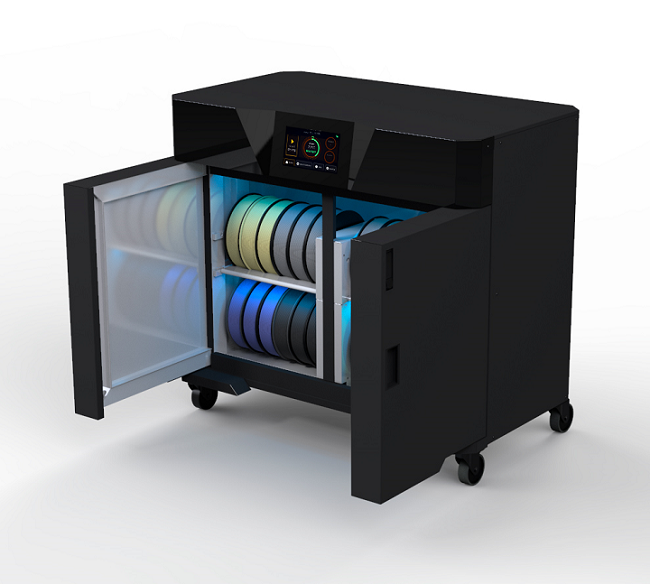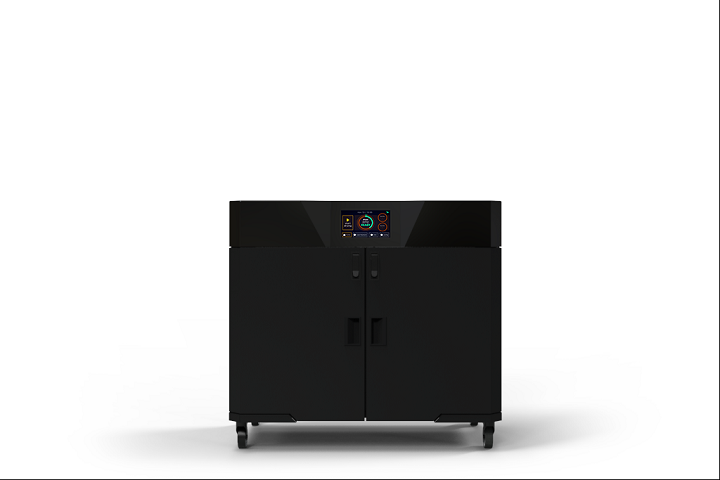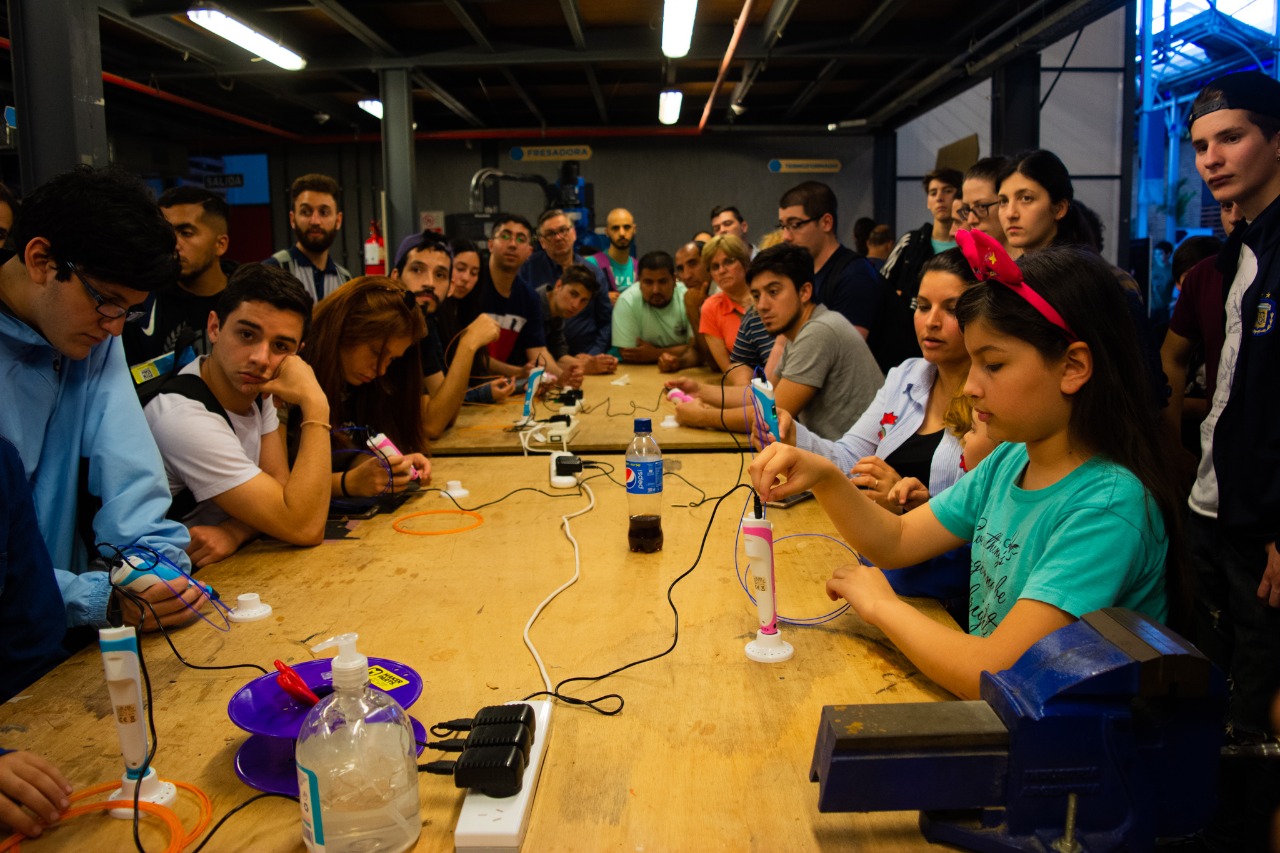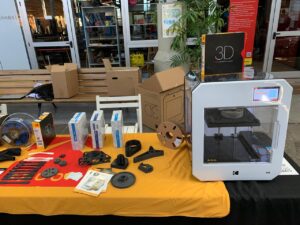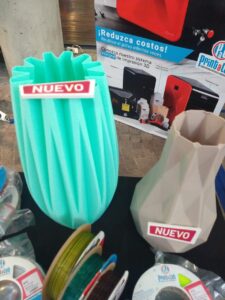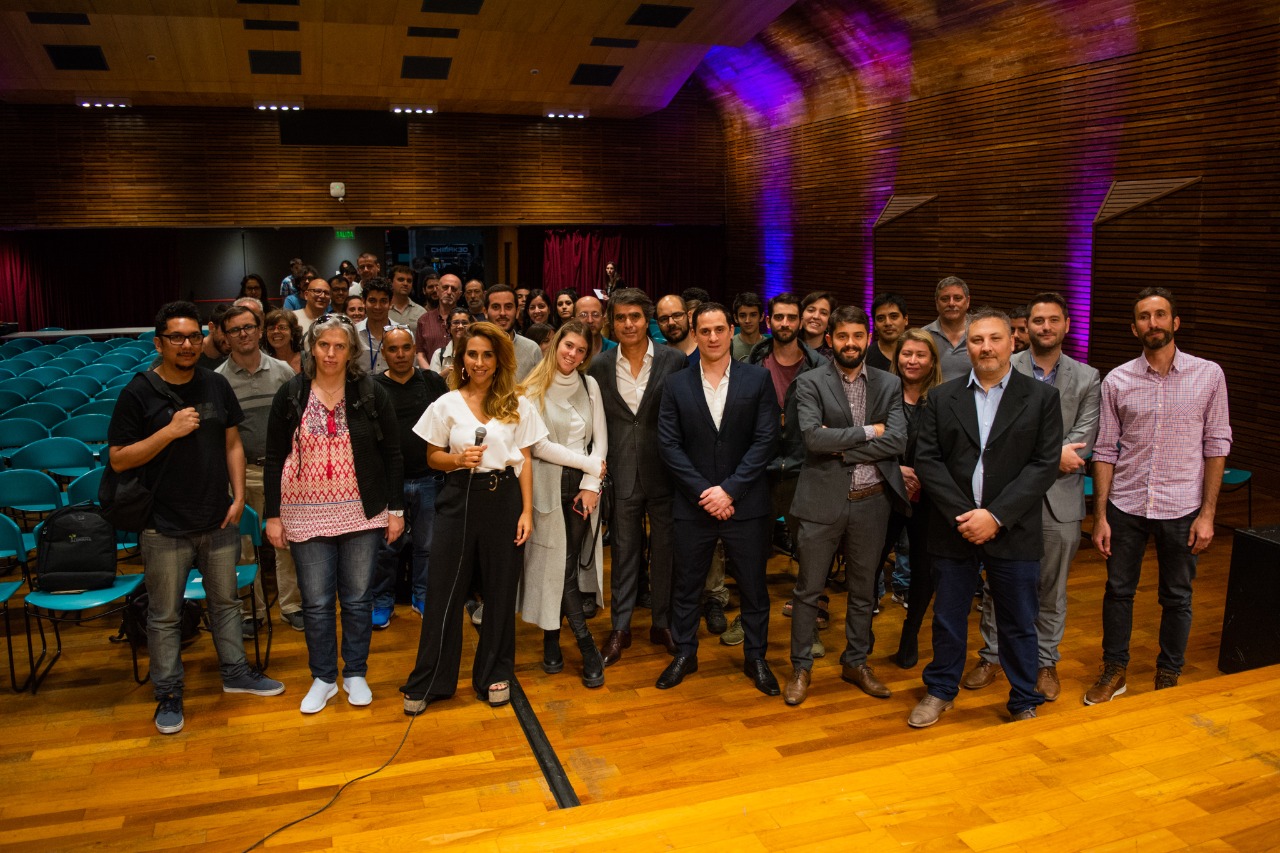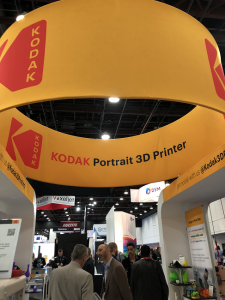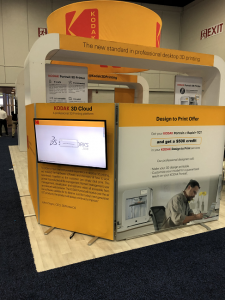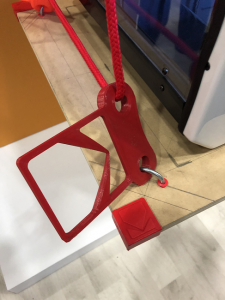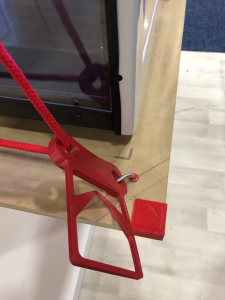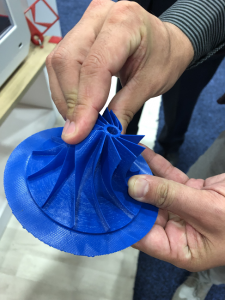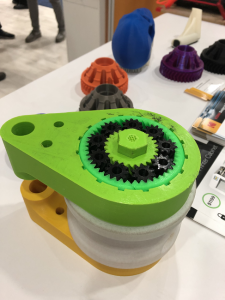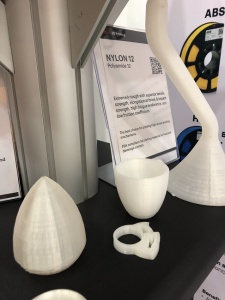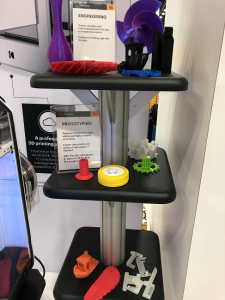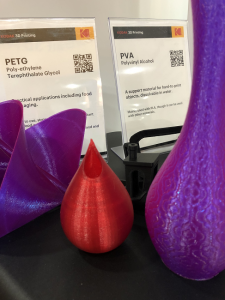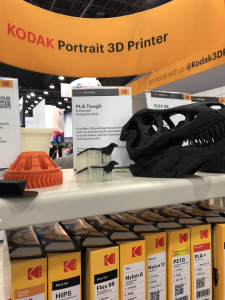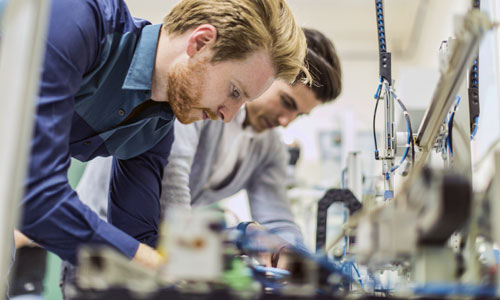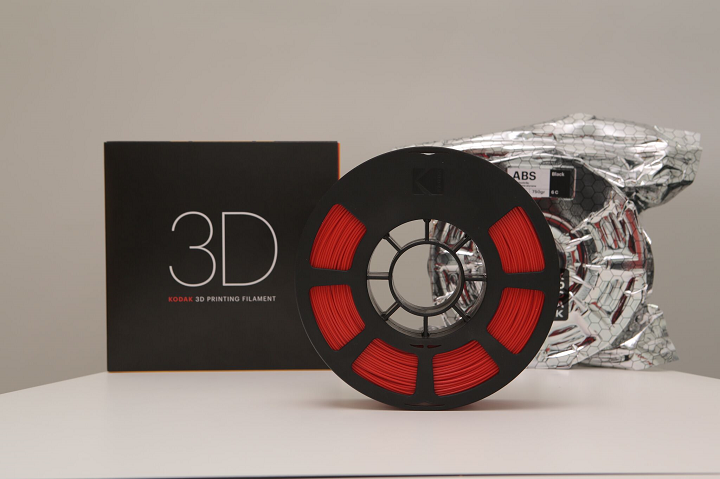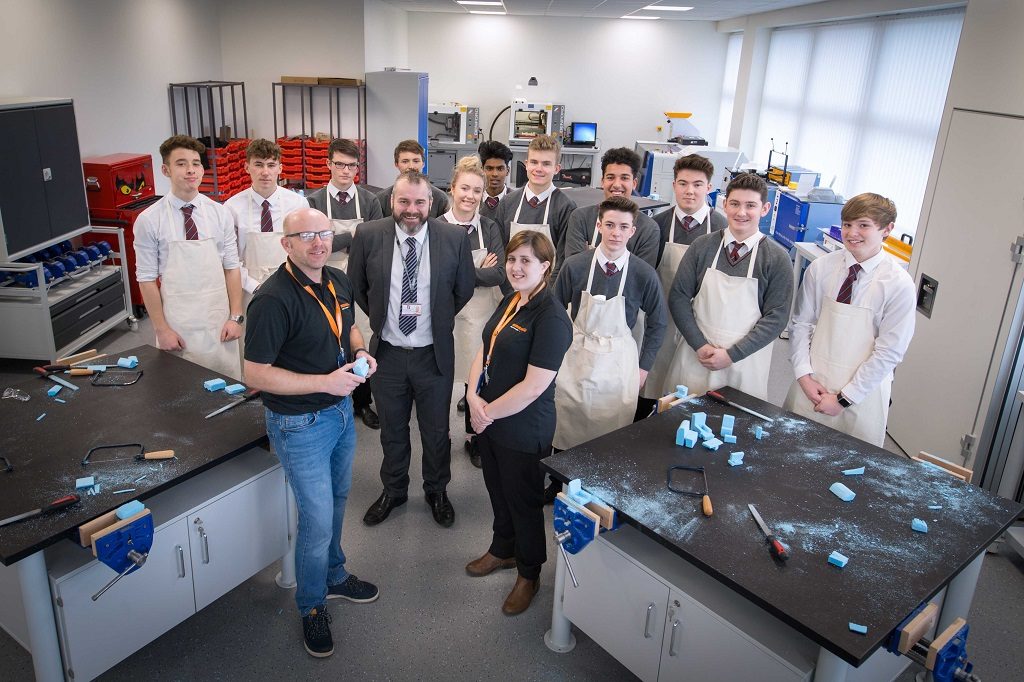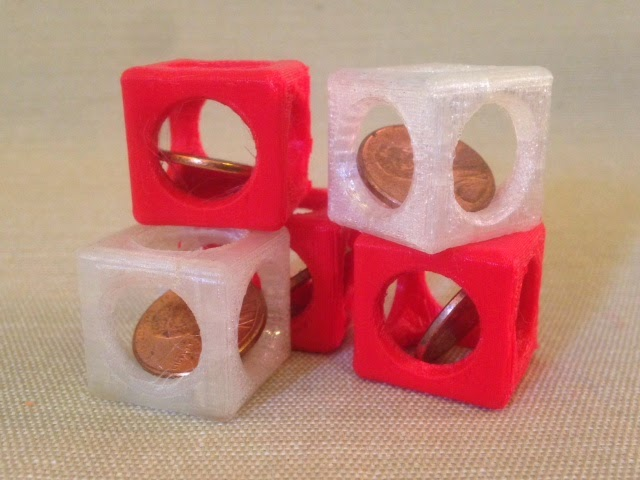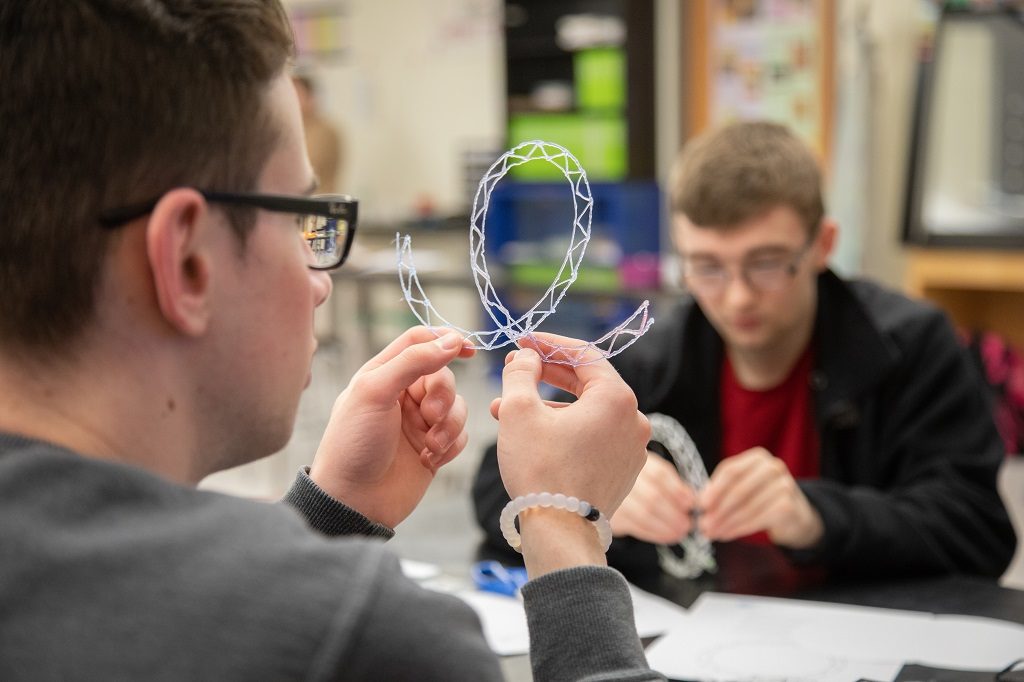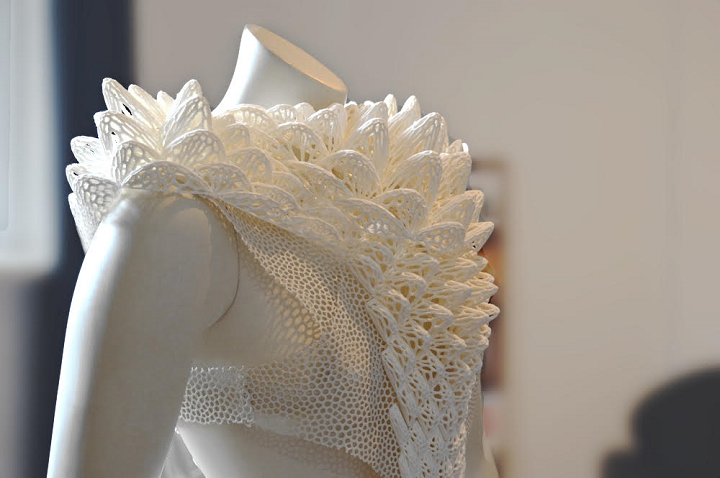Review: The Kodak Portrait 3D printer – a reliable dual extrusion machine
Smart International Introducing Multimaterial Dryer for 3D Printing Filaments
Moisture is not your friend when it comes to 3D printer filament, as humidity can cause weakened material, which then leads to fragile prints, poor surface finish and adhesion, and also degradation. The filament can break in your printer or parts can warp or become very brittle. If you just leave a PLA filament on your printer it will degrade in days, nylon in hours. That’s why it’s so important to keep your material dry before you use it.
Smart International, the 3D printing licensee for KODAK, just announced the launch of a new system that they say will help dry 3D filaments and materials up to ten times faster than other systems – the Smart3D Multimaterial Dryer.
“While typical drying cycles take between 8 – 48 hours and use heat which does not remove moisture completely, the Smart 3D MultiMaterial Dryer uses a hybrid technology to dry filament in as little as an hour,” Helen Blesky, the Marketing Manager for KODAK 3D Printing’s Global Brand Licensee Smart International, told 3DPrint.com.
The 892 x 500 x 825 mm machine, developed for the FFF 3D printing market, offers efficient 3D filament drying through the use of hybrid technology, and, as a Smart International press release states, integrates industrial drying “at end-user level.” By ensuring moisture-free filament, users of the Smart3D Multimaterial Dryer can achieve consistent and repeatable 3D printing results.
Most current solutions that work to combat moisture and humidity will dry filament through the use of heat, but this really isn’t the best solution to the problem. For starters, heat won’t even necessarily remove 100% of the humidity from filament, and it doesn’t allow different materials to dry at the same time. In addition, it can affect both the chemical and physical characteristics of the materials it’s being used to treat by up to several degrees, and it can take between 8-48 hours to run a full cycle.
 The new Smart3D Multimaterial Dryer uses a hybrid technology that can ensure dry filament in as little as one hour – up to ten times faster than current methods of drying. With an internal storage capacity of 733 x 250 x 506 mm – equaling up to 30 spools able to be dried and stored inside – the system is compatible with any 3D printing filament with a spool diameter of up to 500 mm.
The new Smart3D Multimaterial Dryer uses a hybrid technology that can ensure dry filament in as little as one hour – up to ten times faster than current methods of drying. With an internal storage capacity of 733 x 250 x 506 mm – equaling up to 30 spools able to be dried and stored inside – the system is compatible with any 3D printing filament with a spool diameter of up to 500 mm.
“This product is the natural result of our customers’ requests to complete the low moisture chain and guarantee repeatable prints. When we launched the Kodak filament line featuring low moisture and vacuum-sealed packaging, and the enclosed KODAK Portrait 3D Printer with its filament protection cases, humidity was not widely perceived as FFF 3D printing’s silent enemy as it begins to be understood now,” stated Demian Gawanski, CCO of Smart International. “Since then, with chemical giants strongly stepping onto our industry and broadening its range of applications, it hurts our eyes to see high performance filament go to waste, bake in ovens or centrifugate in salad spinners. We feel this completes the most comprehensive professional ecosystem on the market and inaugurates our new year of exciting Industry 4.0 compliant releases targeted at exacting customers.”
The system, with both Ethernet and USB connectivity, recognizes spools through RFID tags, and an intuitive 7″ touchscreen records all the ambient conditions inside the drying chamber. Each filament can be scanned as it’s stored, so it’s very easy to keep track of your stock of dried materials.
When it comes to energy consumption, the Smart3D Multimaterial Dryer is very efficient, as it uses up to ten times less energy than other filament dryers on the market; this allows users to process more material in a shorter amount of time. Speaking of materials, the new system’s drying process makes it possible to dry several different materials, such as TPU, PVA, and Nylon, at the same time.
This latest edition to the KODAK 3D Printing Ecosystem comes with a discount of 10% off the $4299 MSRP for pre-order customers throughout the month of February, or until the limited stock of systems runs out. Visit local resellers for availability; pre-ordered machines will ship out this April.
Discuss this story and other 3D printing topics at 3DPrintBoard.com or share your thoughts in the Facebook comments below.
[Images provided by Smart International]
The post Smart International Introducing Multimaterial Dryer for 3D Printing Filaments appeared first on 3DPrint.com | The Voice of 3D Printing / Additive Manufacturing.
3D Printing Congress in Argentina: Novel Ideas and a Harsh Landscape Ahead
A new edition of the 3D Printing Congress in Argentina wrapped up last Thursday after two days of workshops, supplier stands and speakers talking about the challenges and solutions of manufacturing using 3D printing. From biomaterials to resins, 3D printing in the automotive industry, 3D medical simulators and biomedical inventions, some of the most innovative uses for the technology show that it is advancing in the country, albeit somewhat slower than expected.
Sergio Cavaliere, Product and Applications Manager for Advanced Machine Systems (AMS), said to 3DPrint.com: “The local market is volatile, complex and caged by controls, yet at the general manufacturing level we notice that companies have begun acquiring additive manufacturing technology, perhaps not at the hyper expectation levels we forecasted five years ago, still, they know that if they don’t begin to use 3D printing, they will lose competitiveness.”
Held 6 to 7 November in the City of Buenos Aires, the event gathered more than 3,500 3D printing enthusiasts, professionals, and researchers who eagerly discussed how to achieve better, cheaper and more efficient results, as well as what’s on the horizon for local 3D printing companies. This year’s main themes focused on 3D printing in industry and biomedicine.
Last year, when the Mercedes Benz plant in Buenos Aires was looking to improve its production line of trucks and vans, they consulted Cavaliere and AMS. The manufacturing process specialists recommended they acquire an additive manufacturing machine to accelerate production. The local branch of the German vehicle maker soon began using a Stratasys F270 24/7 and in only 23 days created the devices needed for the manufacturing engineering of the assembly line.
“In general and around the world, almost 70% of all 3D printing is used for prototyping. However, this is not the case for Argentina, where industries are searching for ways to use the technology in manufacturing aids–like jigs, fixtures, platforms and tools (mainly in automotive). This means that they require more durable materials with high thermal and impact resistant qualities. And while most machines sold locally today are PLA printers that are very common for prototyping, they are not useful in manufacturing. That’s the reason our product sparked a lot of interest among attendees at the Congress,” suggested Demian Gawianski, CCO of Kodak 3D Printing during an interview with 3DPrint.com.
Gawianski considers that 3D printing know-how has been growing in recent years, more focused on industry and engineering applications. In 2012, Argentina-based Smart International began developing and manufacturing 3D printers and in 2018 they released Kodak’s Portrait 3D printer, a new professional 3D printing solution, which was developed through a global brand licensing agreement.
Furthermore, the team behind Kodak showcased parts that are being produced as part of their new segment, an alliance with renown polymer manufacturers worldwide, such as BASF, Owens Corning, Clariant, and DSM. “The pieces printed with our machines using BASF stainless steel are very alluring for manufacturers because they have 80% stainless steel and 20% of a polymer which after a few post-processes becomes 100% stainless steel,” explained Gawianski. “Our machines are certified to work with already established materials from large manufacturers, allowing our customers to develop engineering pieces with high resistance.”
Not to be missed was Juan Manuel Romero’s talk about his Game of Thrones spoons, made earlier this year exclusively and in partnership with HBO Latin America, just in time for the premiere of the world-wide awaited sixth and final season of the show. The innovative development even competed at Cannes’ International Festival of Creativity during the 2019 award season.
“3D printing offers infinite novel possibilities for jewelry creations, characterization, and improved quality. The precision approach of the machines is an advantage to more traditional methods of creating jewelry,” said Romero to 3DPrint.com. “Back in 2014 we realized that we needed to scale production without losing the design edge, and 3D printing gave us all that and more.”
Romero, the owner of Quimbaya, has been a goldsmith jeweler for over 10 years, yet he learned quickly that using 3D printing to go from design to molding makes a big difference towards his end product. He states that “morphologically, the jewelry design has no limit, while with conventional methods, the same level of accuracy could never be achieved.” For his Game of Thrones spoons, he used Photocentric’s Precision 1.5 machines to create the prototype and the molds that were then used to make the metal spoons. The four spoons (representing the most iconic houses of the series: Stark, Lannister, Targaryen, and Greyjoy) traveled from Argentina to Europe with HBO, they became a very popular and desirable item due to the visibly unique quality, traits and intricate work.
One of the most popular booths among attendees was PrintaLot. The company director, Mariano Perez, has underlined the success of his filaments: “Our client portfolio used to be made up mainly of hobbyists, and today we mostly get industrial market orders from companies that are driving the digital transformation of the industry”. In this sense, he adds that “we began working with other markets in the region, like Brazil, which has a big demand for our products.” One of the biggest orders the company got from Brazilian clients was a request for a new PLA color, the green-blue shade made famous by jewelry maker Tiffany.
“3D printing machines and materials are changing the production processes of different economic sectors and creating new business models. We also began reselling Wiiboox Sweetin, the gourmate food 3D printer, and Ultimaker, because we noticed many local entrepreneurs were searching for this type of solutions,” Mariano told 3DPrint.com.
In addition to the increasingly popular local 3D printer suppliers exhibiting the latest MakerBot, Formlabs, BCN3Ds, and Trideo (one of the most popular local brands), new and creative applications drew big crowds. Like a surgical simulator; 3D bioprinters to treat wounds in diabetic patients; bespoke 3D printed titanium implants, and the WalkingMaker, a 3D printer with wheels that extrudes material obliquely.
Nicolas Meer, co-creator of a pediatric surgical simulator for medicine residents said: “we spoke to pediatric surgeons who suggested the best way to teach the techniques of laparoscopy to students and future doctors was through a simulator, instead of waiting for a real case or practicing with animal parts. I have been working with 3D printers since 2012 so I decided to design and print a small simulator that wouldn’t cost more than $500.”
The post 3D Printing Congress in Argentina: Novel Ideas and a Harsh Landscape Ahead appeared first on 3DPrint.com | The Voice of 3D Printing / Additive Manufacturing.
KODAK 3D Printing expands materials and accessories for Portrait 3D printer
Kodak Launched New Design to Print Service, Showcased 3D Printing Ecosystem
 Just a couple of short years ago, Kodak entered the AM market with its 3D Printing Ecosystem, which includes specialized software, the dual extruder, professional Portrait 3D printer, and a line of premium, low moisture content filaments. I learned a lot about this ecosystem while visiting Kodak’s booth at the recent RAPID+TCT show in Detroit, as the Portrait, and a wide array of example prints made on it, were being showcased.
Just a couple of short years ago, Kodak entered the AM market with its 3D Printing Ecosystem, which includes specialized software, the dual extruder, professional Portrait 3D printer, and a line of premium, low moisture content filaments. I learned a lot about this ecosystem while visiting Kodak’s booth at the recent RAPID+TCT show in Detroit, as the Portrait, and a wide array of example prints made on it, were being showcased.
On to new business first – the company launched its new Design to Print Service, which Kodak’s CCO and and co-founder Demian Gawianski told me is helpful for “customers who find designers’ time very valuable.”
“This can go from converting any 3D model into a 3D printable file to tuning the parameters on how to print those files,” he told me. “Basically, if you have complex geometry that wouldn’t go with our preset parameters, because it may have some bridges or overhangs or something like that, we would create the profile for the user, and our designers will actually print out the part to make sure it works.”
The company was offering a launching offer for its new service at the show – any customer who purchased the Portrait 3D printer at RAPID would also receive a $500 credit for the Design to Print Service.
 This valuable service is an easy three-step process: first, share your project on your Kodak 3D Cloud account. Then, interact with the company’s professional designers in order to get a quick quote for the project, in addition to an estimated completion date. Finally, have your part optimized for a guaranteed result, printed, and tested by the Kodak team. You will then receive an STL file from the company that’s been modified for successful 3D printing. The service is available in English and Spanish, from 8 am to 5 pm EST, for a standard rate of $45 an hour; a priority job is available for an hourly rate of $90.
This valuable service is an easy three-step process: first, share your project on your Kodak 3D Cloud account. Then, interact with the company’s professional designers in order to get a quick quote for the project, in addition to an estimated completion date. Finally, have your part optimized for a guaranteed result, printed, and tested by the Kodak team. You will then receive an STL file from the company that’s been modified for successful 3D printing. The service is available in English and Spanish, from 8 am to 5 pm EST, for a standard rate of $45 an hour; a priority job is available for an hourly rate of $90.
“We want to make sure that the user has a very successful experience, with any level of knowledge they may have about 3D printing,” Gawianski continued. “We want to have a comprehensive approach.”
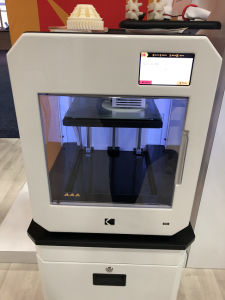 This includes providing users with the right materials and hardware, empowered by good software, and Gawianski believes that Kodak’s design solution offers this unique, comprehensive approach.
This includes providing users with the right materials and hardware, empowered by good software, and Gawianski believes that Kodak’s design solution offers this unique, comprehensive approach.
Then we moved over to the Portrait 3D printer, which features a compact 215 x 210 x 235 mm build volume with a magnetic, heated build plate and dual extruders. With an intuitive color touchscreen that supports multiple languages, HEPA filter with activated carbon, automatic bed leveling, and live print monitoring via a built-in camera, I can see why Kodak calls it “the new standard for ‘desktop’ professional printing.”
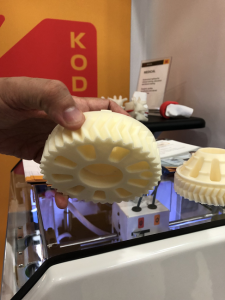 Gawianski noted the “fully enclosed chamber,” which helps enable a “high level of control,” stability, and accuracy. He also pointed out the dual extrusion system with automatic nozzle lifting. The #2 hotend on the left is Teflon for high temperature materials, while the one on the right is metal for lower temperatures. The part being printed while we were standing there was out of white ABS.
Gawianski noted the “fully enclosed chamber,” which helps enable a “high level of control,” stability, and accuracy. He also pointed out the dual extrusion system with automatic nozzle lifting. The #2 hotend on the left is Teflon for high temperature materials, while the one on the right is metal for lower temperatures. The part being printed while we were standing there was out of white ABS.
“It would be difficult to achieve this level of quality on another printer with ABS, because it would warp and have all kinds of problems,” he explained.
Then we walked over to a setup in the corner of the booth that had caught my eye when I first arrived. A Portrait 3D printer – which was currently operating and weighs about 35 kg – had been placed on a rather thin-looking wooden platform, which was suspended by ropes that were attached to nylon hooks 3D printed on the Portrait itself.
The nylon hooks were strong enough to keep the platform stable, so the print could continue uninterrupted with “the same level of quality” while it was fabricating a blue part out of strong but flexible Nylon 6.
“The printer comes with two filament cases. You open the back of a filament, and place the filament in the case,” Gawianski said. “It has a silica gel that continues to protect the filament all the way from the manufacturing plant to the printed part.”
This case protects the filament from absorbing dust or humidity. Kodak is open to Portrait customers using third party materials, but these clear cases are only for its own filament.
He then started to show me various parts made out of Kodak’s other materials, such as a blue skull printed out of PLA Tough with water-soluble PVA supports, an engineering part made out of ABS with HIPS supports that dissolve in Limonene, and a large part with a green top that can lift 700 lbs of weight.
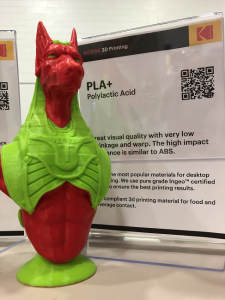 Kodak offers 11 different materials, including strong, food-safe PETG and semi-flexible Flex 98 with high abrasive resistance. Gawianski brought out a 3D printed part that was a good example of the Portrait 3D printer’s dual extrusion. The figure, which bore a strong resemblance to the Egyptian god Anubis, was made with PLA+ (green) and PLA Tough (red), which are the two materials that come with the Portrait 3D printer out of the box.
Kodak offers 11 different materials, including strong, food-safe PETG and semi-flexible Flex 98 with high abrasive resistance. Gawianski brought out a 3D printed part that was a good example of the Portrait 3D printer’s dual extrusion. The figure, which bore a strong resemblance to the Egyptian god Anubis, was made with PLA+ (green) and PLA Tough (red), which are the two materials that come with the Portrait 3D printer out of the box.
“We also have Nylon 12, which is FDA certified and has high resistance to impact,” Gawianski said, showing me two parts in translucent white.
“We also have some further ABS parts – this is a delamination test,” he continued, scratching the side of a small container. “It’s difficult to achieve this with an open printer, you need an enclosed one.”
Kodak will soon be releasing some new materials to the market, such as acrylic, which I also got the chance to see.
Our conversation ended by discussing Kodak’s 3D printing software.
“We have a desktop solution, which is the Kodak 3D Slicer,” Gawianski explained. “And we have the Kodak 3D Cloud, that is a cloud management system that enables you to manage an unlimited number of printers in unlimited locations from a single data place. So from your computer, phone, whatever, you can manage this fleet of printer.”
I asked if the company had anything new on the horizon, and aside from new filaments, Gawianski also said we can expect to see a new 3D printer model by the end of the year.
Take a look at some more of my pictures from the Kodak booth at RAPID+TCT 2019 below:
Discuss this story, and other 3D printing topics, at 3DPrintBoard.com or share your thoughts in the Facebook comments below.
[Images: Sarah Saunders]
Kodak announces Design to Print Service for Portrait 3D printer at RAPID+TCT
10 Ways 3D Printing Played a Part in Education in 2018
3D printing is often used in education these days, whether it’s being taught as a subject or used to enhance another one. As we’re moving ever closer to the start of a new year, we decided to save you some time and gather the ten best education stories from 2018 in one article.
Siemens STEM DAY
The Siemens Foundation focuses on philanthropic efforts in order to continue the advancement of STEM-related education and workforce development, and has invested millions of dollars for this cause in the US. In early 2018, the Siemens Foundation worked with Discovery Education to re-brand its annual Siemens Science Day into a program for more modern educational opportunities: Siemens STEM Day, which is an opportunity for US schools to promote STEM activities for both students and teachers. The program, which doesn’t actually happen on one specific day but is a promotion of STEM lessons and hands-on activities, is meant to be used by students in grades K-12, and offers multiple tools and resources to help reboot STEM curriculum.
New 3D Printing Educational Initiatives
In February, we provided a round-up of some of the many educational initiatives that were looking to provide adults with a deeper understanding of 3D printing. Included in this round-up was a new online course for professionals by MIT, new 3D printing courses from the Sharebot Academy program, and a joint two-day training course in additive manufacturing from German consulting firm Ampower and full service prototyping and 3D printing provider H & H. Additional educational initiatives shared in the round-up were 3DPrint.com’s own Additive Manufacturing with Metals Course.
learnbylayers Partnered with Kodak
In 2017, educator Philip Cotton launched an online 3D printing resource for teachers called learnbylayers that offers lesson plans, project ideas, assessments and more that were designed by teachers for teachers. The site grew quickly, and in February Cotton announced that it had reached a distribution agreement with Kodak. The learnbylayers educational curriculum was added to the Kodak 3D Printing Ecosystem, as the company began offering the internationally-taught curriculum along with its Portrait 3D printer’s launch.
Renishaw Deepened Its Commitment to 3D Printing Education
This spring, Renishaw announced that it would be deepening its commitment to 3D printing education. The company established a new Fabrication Development Centre (FDC) at its Miskin facility in South Wales, with the goal of inspiring young people to pursue STEM careers. The FDC has two classrooms, staffed by qualified teachers and Renishaw’s STEM ambassadors, that can be used for free by schools or groups of young people for lessons or workshops. The FDC was actually in use by Radyr Comprehensive School students long before it was officially launched by Andy Green, a driver for Bloodhound SSC, a 3D printing user and Renishaw partner which also devotes many resources to education about the technology.
Ultimaker Launched New 3D Printing Core Lessons for STEAM Education
In April, Ultimaker launched its new Ultimaker Core Lessons: STEAM Set for educators. Eight free lessons, published under a Creative Commons Attribution-ShareAlike 4.0 International License, are included in the set, which can help teachers in informal, K12, or Higher Ed classrooms incorporate 3D printing into their educational practices and STEAM curriculum. Some of the beginner lessons include 3D printing a coin trap, flashlight, and penny whistle, and can teach young students important skills like how to align objects, using symbols to communicate ideas, and how to effectively work together on creative projects.
PrintLab Teamed Up with CREATE Education Team
UK-based global 3D printing distributor and curriculum provider PrintLab partnered with UK 3D printing company CREATE Education, a collaborative platform that provides educators with free resources and support, in order to support schools all across the UK with 3D printing. Each company’s educational 3D printing offerings will be combined in this partnership so that UK schools can enjoy unlimited access to full 3D printing solutions for the classroom, which will be locally supported for life by CREATE. Multiple initiatives came out of this partnership to support teachers, like 3D printer loan schemes, funding advice and resources, special training and curriculum workshops, and new educational 3D printing bundles.
3Doodler Introduced New Educational Kits
3Doodler has long supported education, and often releases new STEM-centered educational packages, including its latest classroom product line: the 3Doodler Create+ EDU Learning Pack and 3Doodler Start EDU Learning Pack. Each pack, designed for and with teachers, was designed specially for classrooms from kindergarten to 12th grade and includes 6 or 12 3Doodler pens (Create or Start, depending on the package) and 600 or 1,200 strands of plastic, as well as other tech accessories, lesson plans, and classroom materials. Additionally, the company released its 3Doodler Create+ EDU Teacher Experience Kit and 3Doodler EDU Start Teacher Experience Kit, which are designed to be trial packs for teachers who are thinking about introducing the 3Doodler into their classrooms.
Robo Acquired MyStemKits
3D printer manufacturer Robo announced this summer that it had acquired Atlanta company MyStemKits, which provides the largest online library of STEM curriculum in the world. Thanks to this acquisition, Robo is now offering educational bundles that include its classroom-friendly 3D printers, a supply of filament, one-year subscriptions to MyStemKits, and additional professional development and online learning.
GE Additive’s Education Program Provided Five Universities with Metal 3D Printers
GE’s Additive Education Program (AEP) – a five-year, $10 million, two-part initiative to provide 3D printers to as many schools as possible – chose five universities this summer to receive an Mlab 200R from the program. 500 proposals were submitted for this round of the program, and GE Additive chose German’s Coburg University of Applied Sciences and Arts, Ireland’s University of Limerick, the Calhoun Community College in Alabama, the University of Illinois at Urbana-Champaign, and West Virginia University as the lucky winners.
3D Printing In Fashion Education
In a recently published paper, titled “Integration of 3 Dimensional Modeling and Printing into Fashion Design Curriculum: Opportunities and Challenges,” Nicole Eckerson and Li Zhao from the University of Missouri discussed whether 3D printing should be integrated into fashion design curriculum. The researchers noted that while 3D printing has been recognized as a major influence in the work of designers and engineers, educators in the fashion industry are facing a lack of time, resources, and knowledge to teach the technology to students. The two conducted semi-structured interviews with eight 3D printing industry experts and academic professionals for their research, and came up with three distinct themes from their data about why 3D printing should be adopted, and taught, in fashion.
Discuss this and other 3D printing topics at 3DPrintBoard.com or share your thoughts below.

